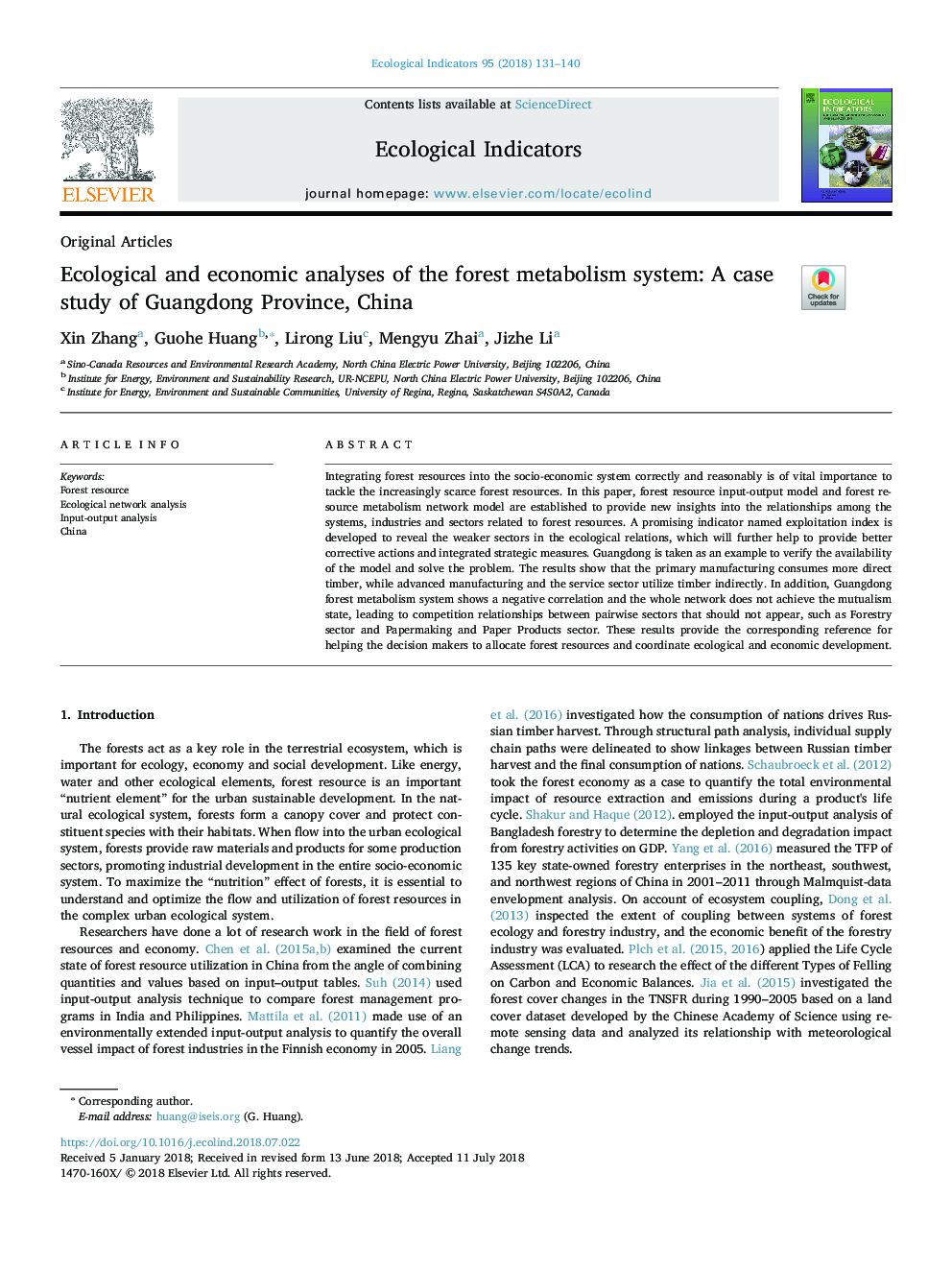| کد مقاله | کد نشریه | سال انتشار | مقاله انگلیسی | نسخه تمام متن |
|---|---|---|---|---|
| 8844928 | 1617107 | 2018 | 10 صفحه PDF | دانلود رایگان |
عنوان انگلیسی مقاله ISI
Ecological and economic analyses of the forest metabolism system: A case study of Guangdong Province, China
ترجمه فارسی عنوان
تجزیه و تحلیل زیست محیطی و اقتصادی سیستم متابولیسم جنگل: مطالعه موردی استان گوانگدونگ، چین
دانلود مقاله + سفارش ترجمه
دانلود مقاله ISI انگلیسی
رایگان برای ایرانیان
کلمات کلیدی
منابع جنگل، تجزیه و تحلیل شبکه محیط زیست، تجزیه و تحلیل ورودی-خروجی، چین،
ترجمه چکیده
ادغام منابع جنگل به سیستم اقتصادی و اجتماعی به طور صحیح و منطقی به اهمیت حیاتی برای مقابله با منابع فزاینده منابع جنگلی محدود می شود. در این مقاله، مدل مدل ورودی-خروجی منابع جنگل و مدل شبکه متابولیسم منابع جنگی برای ایجاد بینش جدید در مورد روابط بین سیستم ها، صنایع و بخش های مربوط به منابع جنگلی ایجاد شده است. یک شاخص امیدوار کننده به نام شاخص بهره برداری برای نشان دادن بخش های ضعیف در روابط زیست محیطی توسعه یافته است که بیشتر به ارائه اقدامات اصلاحی بهتر و اقدامات استراتژیک یکپارچه کمک خواهد کرد. گوانگدونگ به عنوان مثال برای بررسی وجود مدل و حل مشکل مورد توجه قرار گرفته است. نتایج نشان می دهد که تولید اولیه، چوب های مستقیمتری را مصرف می کند، در حالیکه صنایع پیشرفته و بخش خدمات به طور غیر مستقیم از چوب استفاده می کنند. علاوه بر این، سیستم متابولیسم جنگل گوانگدونگ همبستگی منفی را نشان می دهد و کل شبکه به دولت متخاصم دست نخواهد یافت و منجر به روابط رقابتی بین بخش های متناوب که نباید ظاهر شود، مانند بخش جنگلداری و بخش تولید کاغذ و کاغذ. این نتایج مرجع مربوط به کمک به تصمیم گیرندگان منابع تدارکات جنگل و هماهنگ سازی توسعه زیست محیطی و اقتصادی را فراهم می کند.
موضوعات مرتبط
علوم زیستی و بیوفناوری
علوم کشاورزی و بیولوژیک
بوم شناسی، تکامل، رفتار و سامانه شناسی
چکیده انگلیسی
Integrating forest resources into the socio-economic system correctly and reasonably is of vital importance to tackle the increasingly scarce forest resources. In this paper, forest resource input-output model and forest resource metabolism network model are established to provide new insights into the relationships among the systems, industries and sectors related to forest resources. A promising indicator named exploitation index is developed to reveal the weaker sectors in the ecological relations, which will further help to provide better corrective actions and integrated strategic measures. Guangdong is taken as an example to verify the availability of the model and solve the problem. The results show that the primary manufacturing consumes more direct timber, while advanced manufacturing and the service sector utilize timber indirectly. In addition, Guangdong forest metabolism system shows a negative correlation and the whole network does not achieve the mutualism state, leading to competition relationships between pairwise sectors that should not appear, such as Forestry sector and Papermaking and Paper Products sector. These results provide the corresponding reference for helping the decision makers to allocate forest resources and coordinate ecological and economic development.
ناشر
Database: Elsevier - ScienceDirect (ساینس دایرکت)
Journal: Ecological Indicators - Volume 95, Part 1, December 2018, Pages 131-140
Journal: Ecological Indicators - Volume 95, Part 1, December 2018, Pages 131-140
نویسندگان
Xin Zhang, Guohe Huang, Lirong Liu, Mengyu Zhai, Jizhe Li,
